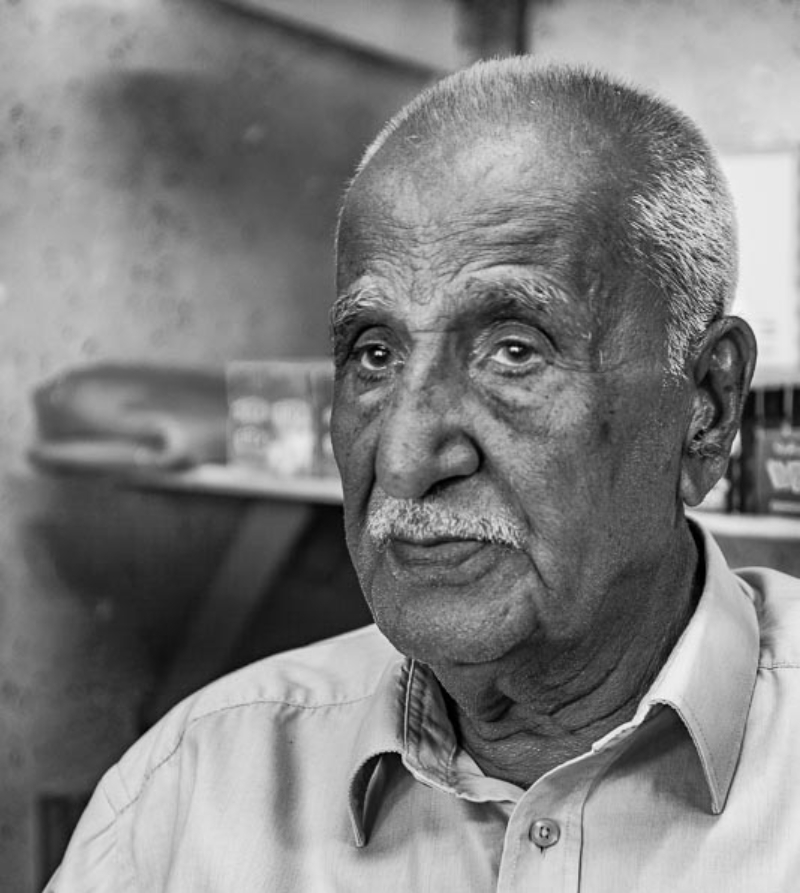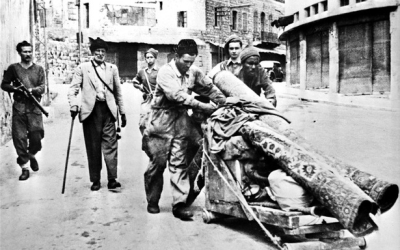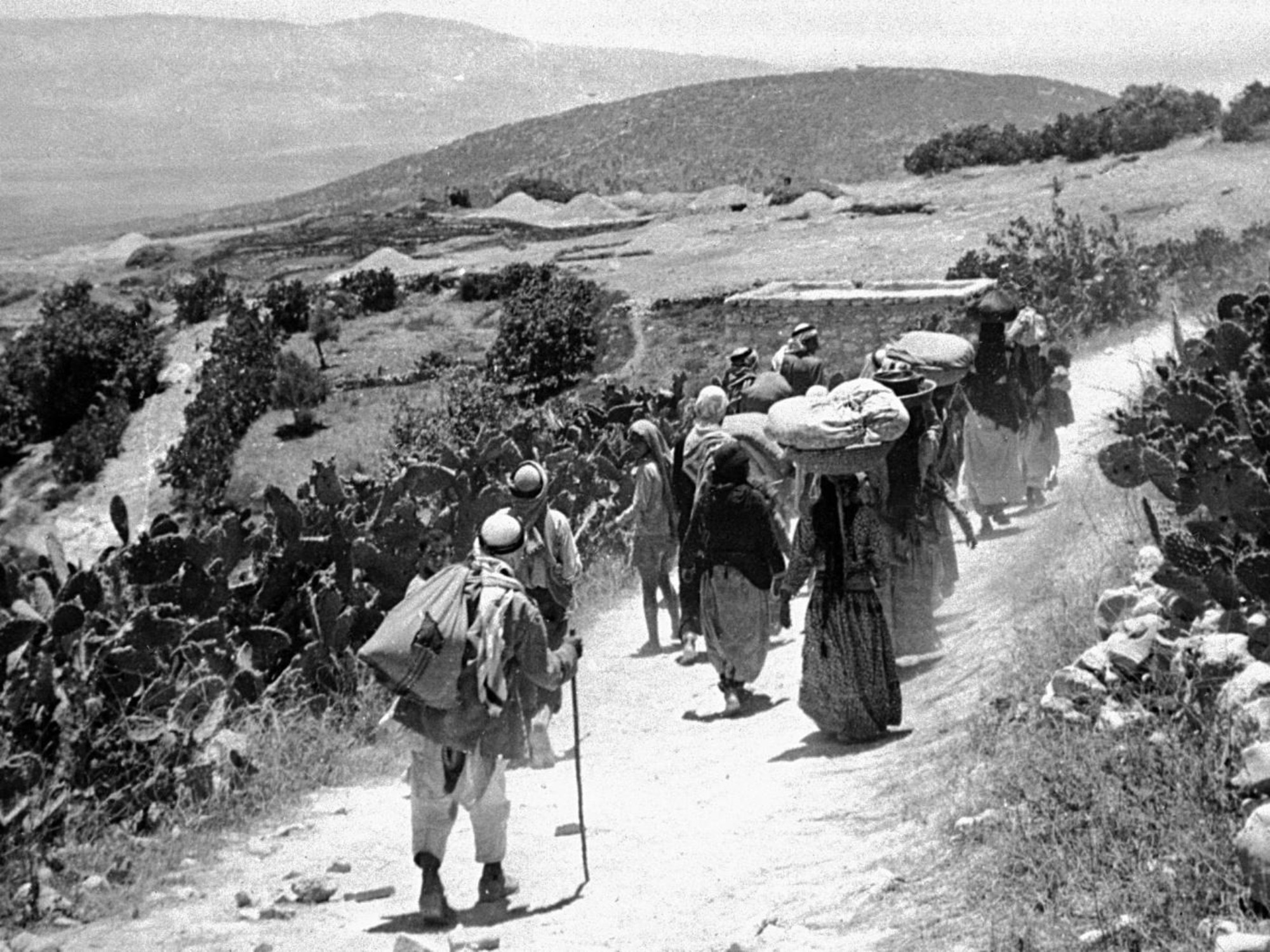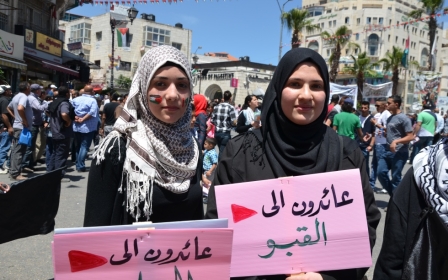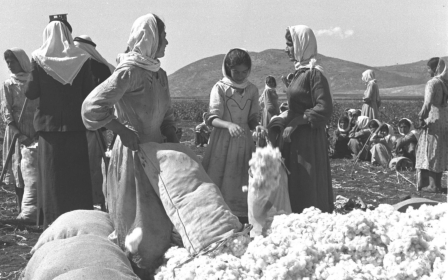The abandoned harvests of 1948: Palestinian farmers remember the Nakba
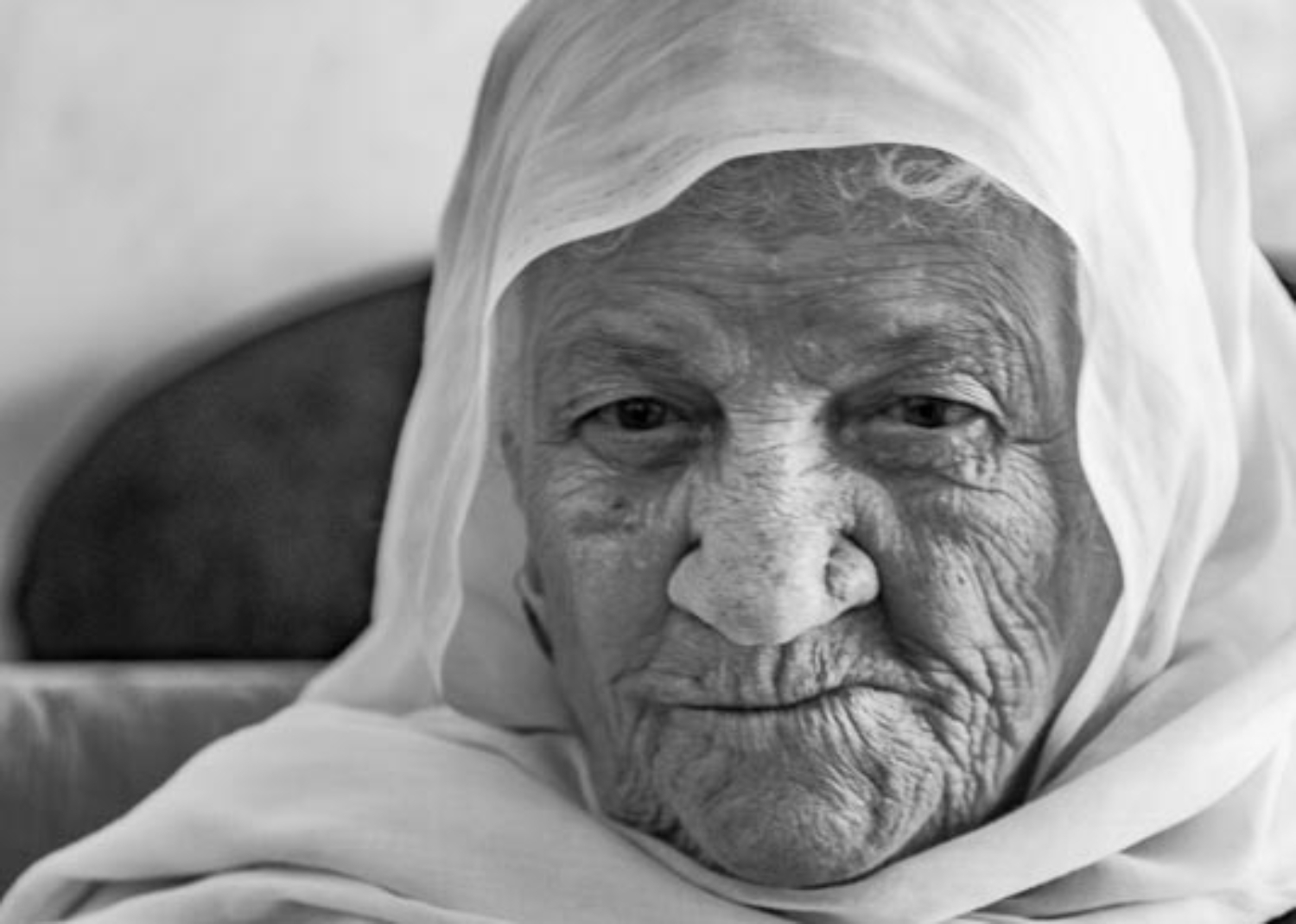
Life wasn’t easy for Palestinian farmers under the British Mandate. But in 1948, their lives were turned upside down.
For over three decades, between 1917 and 1948, Britain ruled over Palestine. While the McMahon-Hussein correspondence during World War I formally promised Arab independence across the region, including for Palestine, the British government vowed in the Balfour Declaration of 1917 to establish a national home for the Jewish people in Palestine.
New MEE newsletter: Jerusalem Dispatch
Sign up to get the latest insights and analysis on Israel-Palestine, alongside Turkey Unpacked and other MEE newsletters
Throughout the Mandate, the British faced resistance from both Palestinians and Zionist militias - as the latter rejected Mandate policies seeking to slow down the influx of Jewish immigrants, and progressively became more aggressive in seeking to create their own state.
On 15 May 1948, Britain withdrew its forces from Palestine, and Zionist leadership declared the establishment of a state of Israel, ramping up the ongoing process of the ethnic cleansing of Palestinians.
Palestinians were taken by surprise by the British decision. After 30 years of brutal British repression, they found themselves without unified leadership, unorganised, and largely unarmed against Zionist paramilitary groups seeking to establish control.
The subsequent killing of some 15,000 Palestinians, the destruction of at least 530 villages and towns, and the forcible displacement of around 750,000 Palestinians from their homes would pave the way for Israel to claim large swathes of land as its own.
While Israelis commemorate Independence Day on 15 May, for Palestinians the events of 1948 and beyond are known as the Nakba - or "catastrophe".
Survivors who spoke to Middle East Eye recalled their memories of escape from massacres and destruction and the difficult transition to uprooted lives as refugees.
Abandoned harvests
For the three-quarters of Palestinians at the time living in rural areas in particular, the Nakba upended life as they knew it.
The British retreat and subsequent ethnic cleansing of Palestinians coincided with the harvest season, the loss of which for farmers would have been a calamity in itself.
Khadija al-Azza, 88, recalled the moment when Zionist militias attacked her village, Tell al-Safi.
"It was mid-summer, and the farmers had already piled the wheat on the threshing floor when Jewish armed gangs attacked the village, killing many farmers,” she said. “Terrified villagers fled and left the heaps of wheat unthreshed. We thought that we would return to thresh it.”
Saeed Dandan, 87, shares similar memories of the moment when his village, Tiret Dandan, was occupied.
“It was the third day of Ramadan when Jewish militiamen raided our village,” he said. “The villagers were about to harvest their corn but were forced to flee. We left our sheep behind and never retrieved them.”
Many displaced farmers tried to sneak back into their villages to salvage whatever crops, livestock or goods they could from their abandoned homes. But to do so was to run the risk of getting shot by Zionist militias. Some farmers succeeded. Others found their villages destroyed. Others still were shot dead.
Zakia Hamad, 91, was among those who fled the village of Saris, west of Jerusalem, for nearby Beit Susin.
"The villagers infiltrated into Saris at night in order to harvest their crops,” she said. “They would reap them at night and go back to Beit Susin to sleep during the day.
“They winnowed and pounded the grains with their hands inside their homes because if the Jews saw them, they would shoot.”
Mustafa Abu Awad, 83, was a child when his village of Sabbarin near Haifa was attacked by militias on 12 May 1948.
"After 10 days, I tried to return with my older brother and arrived at the nearby village of Umm al-Shouf,” he recalled. “We found our village surrounded by (Zionist) gangs and saw 13 of my fellow villagers dead. We couldn’t enter the village so we turned back around. We thought that it was a matter of days before Arab armies would reclaim our village and we could return home.”
An uneven fight
Left to their own devices, Palestinians set up local defence committees in every village, equipped only with old guns carried by untrained farmers. Farmers sold their harvests and women parted with their jewellery in order to buy weapons to protect themselves.
But for the most part, their efforts were no match for the Zionist militias seeking to push them out. News of the Deir Yassin massacre - during which more than 100 villagers were killed on 9 April - spread quickly among Palestinians, sowing fear and playing a decisive role in convincing many people to flee before they met the same fate.
"Villagers heard of the massacre in the nearby village of Deir Yassin, and feared murder and the rape of women,” recalls Shaker Odeh, 87, from the village of al-Maliha. “My father asked my sisters and my mother to leave the village and since I was a child, I followed them to Beit Jala. That same night, my father joined us after al-Maliha was occupied by Zionists."
Odeh recounted the capture of Maliha thusly: "When the Zionists attacked Maliha, there were few (Palestinian) fighters, armed only with old Egyptian rifles. Each fighter only had five bullets, some of which were not suitable for use, in addition to being extremely expensive (half a Palestine pound). They tried to defend the village, but they couldn’t stand their ground."
The decision to leave their homes was extremely difficult, one that families did not take unless they felt no other options remained.
But many Palestinians thought the situation would be temporary, only the matter of a few days. As a result, most fled to places close to their villages, carrying few belongings and supplies.
Shukria Othman, 86, said her father was shot dead near the family home during the attack on the village of Lifta.
“My eldest brother decided that we should leave immediately, like most of the other villagers,” she said. “But one of the farmers, Abu Rayya, didn’t leave as he wanted to stay on his farm where he had planted okra and beans. Then the (Zionist) gangs came and slaughtered him.
“We left in a hurry, taking only two mattresses and two blankets,” she recounts with sorrow. “We left behind jars of olive oil and our chickens. All our belongings and supplies were left behind as we believed that we would return in a few days”.
The road of exile
Like many others, Azza’s journey into exile after the attack on Tell al-Safi on 9 July 1948 was extremely difficult and involved repeated displacement.
“We left on foot, carrying nothing with us. After walking one day and one night, we got to the village of Ajjur, where farmers kindly received us in their homes,” she said. “We spent three days there, then the Zionist gangs attacked Ajjur and we fled to the east.
“We walked for two days without water until we reached Beit Jibrin.”
They remained in Beit Jibrin for a few months until that village was also attacked by Zionist militias in October 1948.
There, Palestinians and their Arab allies fought back for many days.
"The Zionist militias bombarded the town with artillery and warplanes, forcing people to flee towards caves in the hills. They entered the town from the west and we fled from the east. We walked for five days and five nights until we arrived in Hebron," Azza added.
Maryam Abu Latifa, 91, recalls a similarly harrowing escape from the village of Saraa, west of Jerusalem, in July 1948. Villagers tried to defend their homes, but couldn’t; so they escaped in the middle of the night towards nearby hills.
“I locked the door of my home and left, but then I remembered I had left behind my six-month-old baby Yassin,” she said. “So I returned to the house to get him and ran towards the hills in the dark.”
The residents of Saraa sheltered under trees for days, hoping to come back home. But after two weeks, Israeli paramilitary groups arrived with bulldozers and razed the village under their eyes, Abu Latifa said. The villagers lost all hope of return and left on foot for Beit Nattif - a village that would also end up being turned into rubble a few months later.
Yearning for return
After fleeing from one village to another, displaced farmers found themselves in refugee camps, where their agricultural knowledge and experience were no longer useful.
In order to make a living, most had to take on new lines of work.
“After the Nakba, some refugee farmers in the Qalandiya camp worked as construction labourers in nearby areas,” Hamad said. “Others worked as guards at the Qalandiya airport, others as tourist guides.”
As Palestinian refugees have been born, lived, and died for over 70 years in camps made of concrete, they have slowly lost much of the agricultural knowledge that had previously been passed down from generation to generation.
The Nakba resulted not only in the physical displacement of the farmers, but also in the loss of parts of their identity, of their ties to the land.
As 2020 marks 72 years since the beginning of the Nakba, survivors still yearn to return home and cultivate their fields.
Azza, who now lives in the al-Amaari refugee camp near Ramallah in the occupied West Bank, still bemoans the heap of wheat that was left unthreshed.
“I wish the time will come when I will be able to return and die in my hometown,” she said.
This article is available in French on Middle East Eye French edition.
Middle East Eye delivers independent and unrivalled coverage and analysis of the Middle East, North Africa and beyond. To learn more about republishing this content and the associated fees, please fill out this form. More about MEE can be found here.



